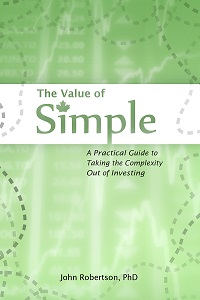Re: FWD: FWD: This Might Work
May 30th, 2007 by PotatoI just got one of those chain letters about boycotting Petro-Canada* to force gas companies to lower prices.
* – by the way, who gets to pick which station to boycott? When will chain letters start coming with a “this letter was started by [Person X] at [website/email], see [website] for any updates that may be relevant to this chain letter (such as the drug in question being off the market for a whole decade, the basic premise of the boycott being unsound, a change in the company’s policies, an apology was received, or the stupid kid died of cancer anyway, and every card you send drives his mother into hysterical fits of tears) as well as a statement of bias.” Of course, until that time I guess there’s always Snopes.
Unfortunately, these ideas never work. Primarily because:
[…] teach them that BUYERS control the marketplace . . . . . not sellers. […] Since we all rely on our cars, we can’t just stop buying gas.
is a contradiction. Buyers can’t control the marketplace as long as they’re not prepared to stop buying gas (or at least reduce usage enough that gas stations are left with excess product). There’s no leverage in that position.
Beyond that, the idea would require extreme organization by consumers to work at all. If Petro-Canada did start having some drop-off in sales, all they would have to do is lower the price a fraction of a cent to get the customers who aren’t participating in the boycott to switch to them. Because of the boycott, the other stations would still have enough support to keep prices high (that is, not everyone would be buying on price alone), and so the price would stay high. If the boycott was perfectly successful and nobody bought gas at Petro-Canada, then gas prices would likely go _up_ at all the other stations because there would be a run on gas — if Petro-Canada is say 1/5 of all gas stations in Canada, then boycotting them would remove 1/5 of our gas supply. Only a ~6% reduction in supply lead to a ~20% increase in price this winter when a refinery in Sarnia had to temporarily shut down. Ignoring all that, there’s also the part where gas is a very “liquid” commodity: the different companies generally have agreements to sell their gas to each other for logistics reasons. If Petro-Canada isn’t selling gas at Petro-Canada branded stations, they can still unload their product in Shell, Sunoco, Canadian Tire, Esso, and Irving stations, and the only ones really hurting are the franchisees.
Wish I had read Snopes before typing that, it would have saved me some time, since they make many of the same arguments :) Snopes on Gas Out.
Also, the old standby of getting the government to drop taxes on gas might have worked in the not-so-distant past, when gas prices were set based basically on the cost of the gas (affected of course by the perceived future cost), a modest profit margin, and the taxes. Back then, the prices changed daily as stations engaged in price wars, and the cost of a barrel of oil fluctuated. Now, however, prices are driven way up by the high demand and low supply — if taxes were lowered, the pump price would stay the same, because that’s how high it has to be to keep people from exhausting the supply. The only difference would be that the oil companies would get more of our money, instead of the government.
There is still the very real possibility that prices have been driven even higher by nefarious means. Whether stations are colluding (and oddly enough it seems that they are even moreso now when the price doesn’t move at all for a whole week than when they flew up and down several times a day in near-synchrony) or whether refineries are purposefully reducing their output is tough to say. Some commentators have pointed out that in addition to the spate of minor refinery fires we’ve had this year, the other refineries have taken their sweet time doing their spring maintenance and fuel mix changeover. This could be a deliberate tightening of supply, or it could be simple prudence: if two of your buddies had fires at their houses, you’d probably take the time to check the batteries in your smoke detector and the readiness of your fire extinguisher.
So, to reduce the price of gas, there’s really only a few things we can do. The first, and most effective, is to stop using it, or use less. That’s also the hardest for us to do; biking is great, but I only know one guy crazy enough to bike Toronto to London, and he only does it once a year. I’m a fan of walking, but also recognize that it’s really only pleasant for about 4-6 months a year. Public transit isn’t always an option, and is sometimes retarded. The next method involves government intervention, and would only work if gas companies really are driving the price up artificially. In that case, we simply have to buy back Petro-Canada and run it as a Crown corporation. Have it buy oil, refine gas, and sell at a modest profit — controlled by the government, it shouldn’t be engaging in collusion, so they’ll sell gas at about what it costs, and the other brands will have to follow suite (though demand issues could still affect that, unless they were wililng to have shortages). Finally, one idea I have is to only buy regular gas. I have no idea if this would work, but it seems as though the refineries can churn out (nearly) whatever grade of gas they want (and it’s not really due to the content of the crude oil). When we had the recent gas shortage, a lot of stations were selling regular only because they needed to streamline the supply chain to meet demand. Even with the immediate crisis behind us, there’s no real reason we can’t take advantage of that streamlining still. Most cars on the road today run just fine on regular gas (87): even the ones that say they need premium (largely) have the technology to change the valve timing/compression ratio to run on regular (at a slight power loss, but most engines that need premium can afford it anyway; if the engine can’t handle 87 then you’ll find out real quick. I’d recommend trying a few liters after letting the tank go nearly bone dry: if the engine pings, you’ll have a problem, turn around, and fill the rest of the way with premium; if you can drive on those few liters just fine, try a few more until you’re satisfied and then put a whole tank in). Either way, we could still eliminate mid-grade, since AFAIK there aren’t any cars sold today that require 89 — they either go for regular, or all-out to premium (though I may be wrong and there may not be a midgrade refining step, it may simply be a mixture of premium and regular done at the pump).


 Questrade: use QPass 356624159378948
Questrade: use QPass 356624159378948 Passiv is a tool that can connect to your Questrade account and make it easier to track and rebalance your portfolio, including the ability to make one-click trades.
Passiv is a tool that can connect to your Questrade account and make it easier to track and rebalance your portfolio, including the ability to make one-click trades.